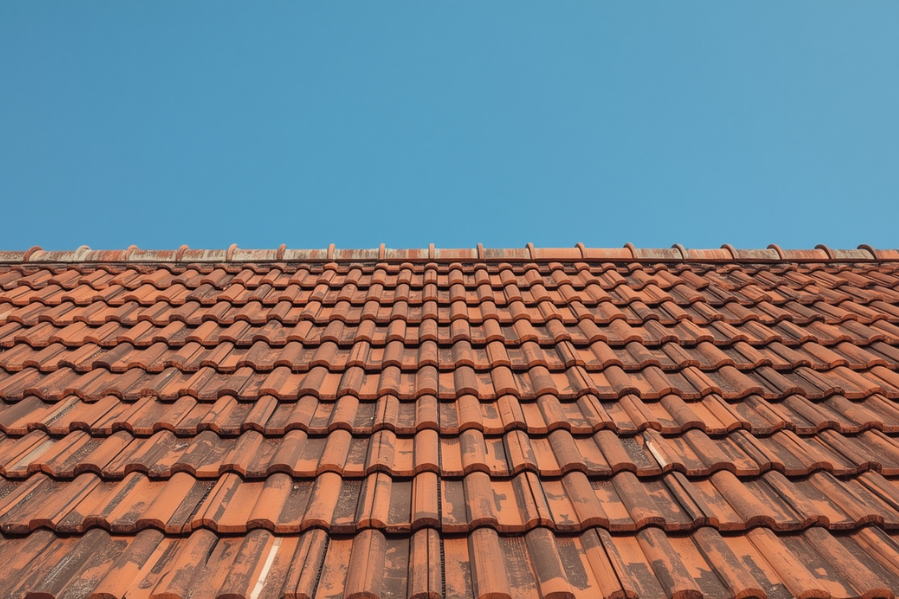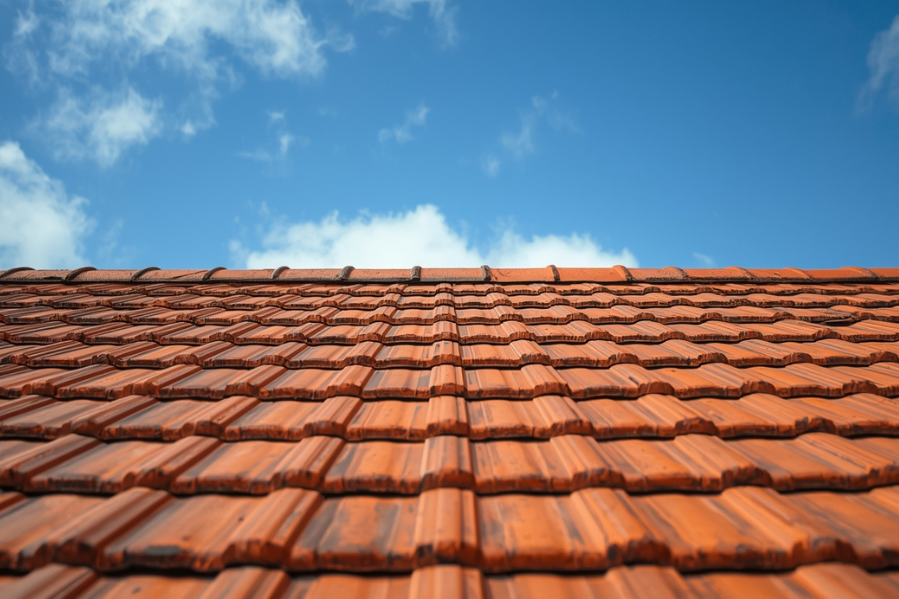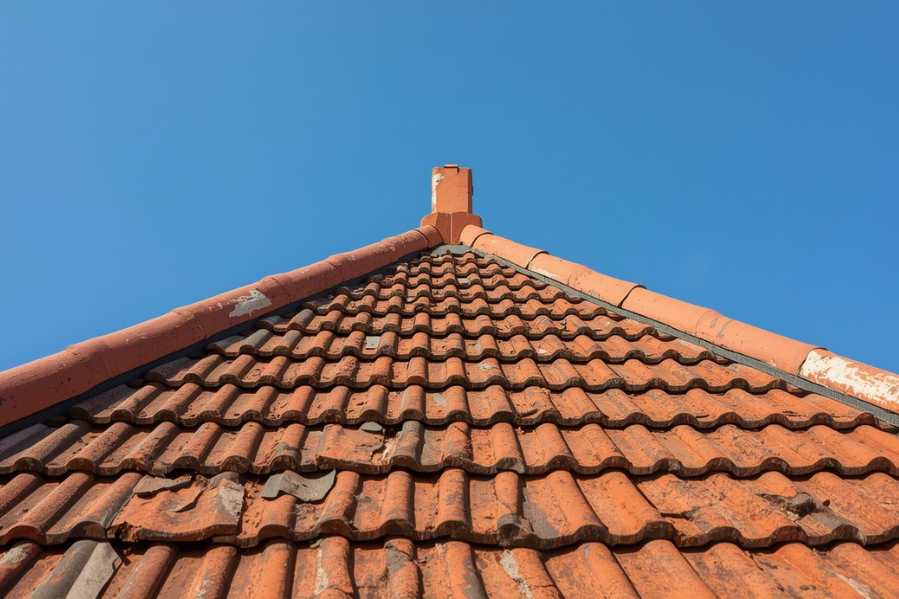Roofs are built to protect your home, but the highest point of the roof is often the most exposed to the elements. That’s where ridge capping comes in. It covers the joint where two sides of the roof meet, sealing it against rain, wind, and debris.
Even though ridge capping looks like a small feature, it plays a big role in roof strength and durability. When it becomes cracked or loose, it can quickly lead to leaks, pest problems, and costly structural repairs.
Key Takeaways
- Ridge capping is the protective covering that seals the top line of a roof where two sides meet
- It prevents water leaks, wind damage, and pest entry
- Common problems include cracked mortar, loose tiles, or weather damage
- Repairs usually involve repointing or rebedding ridge tiles
- Regular inspections every 2 to 3 years can prevent costly repairs
What Is Ridge Capping On a Roof?
Ridge capping is the material that covers the joint at the very top of a pitched roof. It is commonly made from concrete or terracotta tiles on tiled roofs and from metal sheets on Colorbond or other metal roofs.
Its main purposes are:
- To keep out water by sealing gaps at the roof’s highest point
- To prevent tiles from being lifted by wind
- To block entry for pests and debris
- To give the roof a neat and finished look
Why Is Ridge Capping Important For Roof Protection?

Ridge capping is more than cosmetic. Without it, the roof becomes vulnerable to leaks, tile movement, and wind damage. It also prevents unwanted pests like birds and rodents from entering roof spaces.
In storm-prone regions, poor or damaged ridge capping is one of the main causes of roof leaks and structural problems, according to studies from Australian building authorities.
What Causes Ridge Capping Damage?
There are several reasons ridge capping can fail:
- Constant exposure to rain, sun, and wind weakens mortar
- Older roofs develop cracks as materials age
- Expansion and contraction of the building frame causes shifting
- Poor installation leads to weak bedding and pointing
- Storm debris, such as falling branches, can break ridge tiles
How Do You Know If Ridge Capping Needs Repair?
Signs that ridge capping may need repair include:
- Cracks or missing mortar along ridge lines
- Loose or wobbly ridge tiles
- Water stains inside the house after rain
- Gaps visible between tiles at the top of the roof
- Moss or lichen growth around ridge areas
How To Fix Ridge Capping?
There are two main repair methods: repointing and rebedding.
| Repair Type | What It Involves | When It Is Needed |
|---|---|---|
| Repointing | Applying flexible pointing compound to reseal existing mortar | When mortar is cracked but ridge tiles remain secure |
| Rebedding and Repointing | Removing ridge tiles, laying new mortar, reinstalling tiles, and applying pointing compound | When bedding is loose or tiles have shifted |
Step by Step: Ridge Capping Repair
- Inspect ridge tiles for damage or looseness
- Remove old mortar and ridge tiles if necessary
- Apply new bedding mortar to hold tiles in place
- Reseat ridge tiles securely
- Use flexible pointing compound to seal gaps
- Clean the surface for a neat finish
Modern flexible compounds are better than traditional cement as they last longer and resist cracking.
Can You DIY Ridge Capping Repairs?
Small cracks can sometimes be patched by handy homeowners, but major repairs are not recommended. Roof work involves safety risks, and poor workmanship can make leaks worse. Professional roofers use the right materials and guarantee longer lasting results.
How Much Does Ridge Capping Repair Cost?

The price of ridge capping repair depends on the size of the roof, the materials used, and the level of damage.
- Repointing ridge tiles usually costs between 400 and 900 dollars for an average home.
- Rebedding and repointing can range from 1500 to 3500 dollars or more.
- A full roof restoration including ridge cap replacement may cost between 4000 and 12000 dollars.
In Adelaide, the cost to repoint ridge tiles is usually around 20 to 25 dollars per metre. The total ridge tiles repair cost often comes to between 1500 and 2500 dollars depending on access and condition.
What Are The Pros And Cons Of Repair Vs Replacement?
| Option | Pros | Cons |
|---|---|---|
| Repointing | Affordable, quick, extends roof life | Does not solve severe bedding issues |
| Rebedding | Strong and long lasting, like new | Higher cost, more work |
| Full roof replacement | Complete upgrade with warranty | Expensive and disruptive |
Should Ridge Capping Be Inspected Regularly?
Yes. Experts suggest inspections every 2 to 3 years or after strong storms. Routine checks catch small cracks early before they cause costly water damage. If you are wondering about the overall durability of your roof, you can also read our guide on how long does a roof last.
Need Professional Help With Ridge Capping Repairs?
If your ridge capping is cracked, loose, or showing signs of wear, don’t wait for leaks to cause bigger problems. At Long Life Roofs, our expert team provides ridge tile repointing, rebedding, and full roof restorations across Adelaide. Contact us today for a free inspection and reliable repairs that protect your home for years to come.
Frequently Asked Questions
How long does ridge capping last?
Ridge capping usually lasts about 20 to 30 years if it is installed well and maintained. On metal roofs it can last even longer, while tiled roofs may need repointing or repairs sooner depending on weather and wear.
Is a roof ridge cap necessary?
Yes, a roof ridge cap is necessary because it seals the joint where two sides of the roof meet. Without it, rain, wind, and pests can get inside, leading to leaks and damage.
How much does it cost to repoint ridge tiles?
In Adelaide, the cost to repoint ridge tiles is usually around 20 to 25 dollars per metre. For an average home, the total price often falls between 1,500 and 2,500 dollars. The exact amount depends on the size of the roof, how easy it is to access, and the condition of the existing mortar.
Can I use regular shingles for ridge cap?
You can use regular shingles as a ridge cap, but they need to be cut and shaped to fit the ridge line. This is common on asphalt shingle roofs. However, purpose-made ridge cap shingles or tiles are stronger and provide better protection, so they are usually the better choice for long-term durability.
Do you need foam under a ridge cap?
Yes, foam closure strips are recommended under a ridge cap because they seal gaps, keep out water, dust, and pests, and improve ventilation on metal and tiled roofs.


Leave A Comment